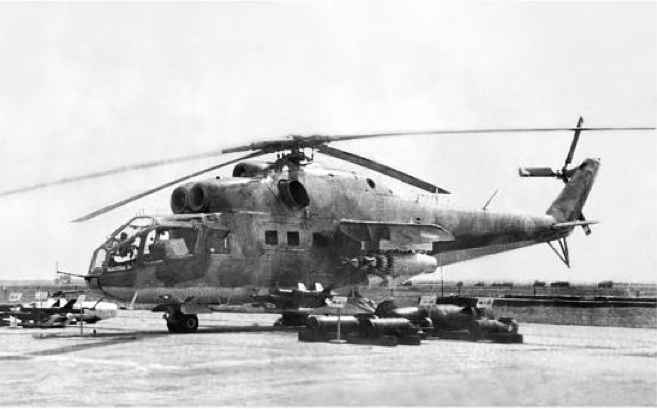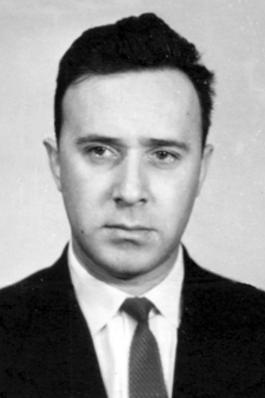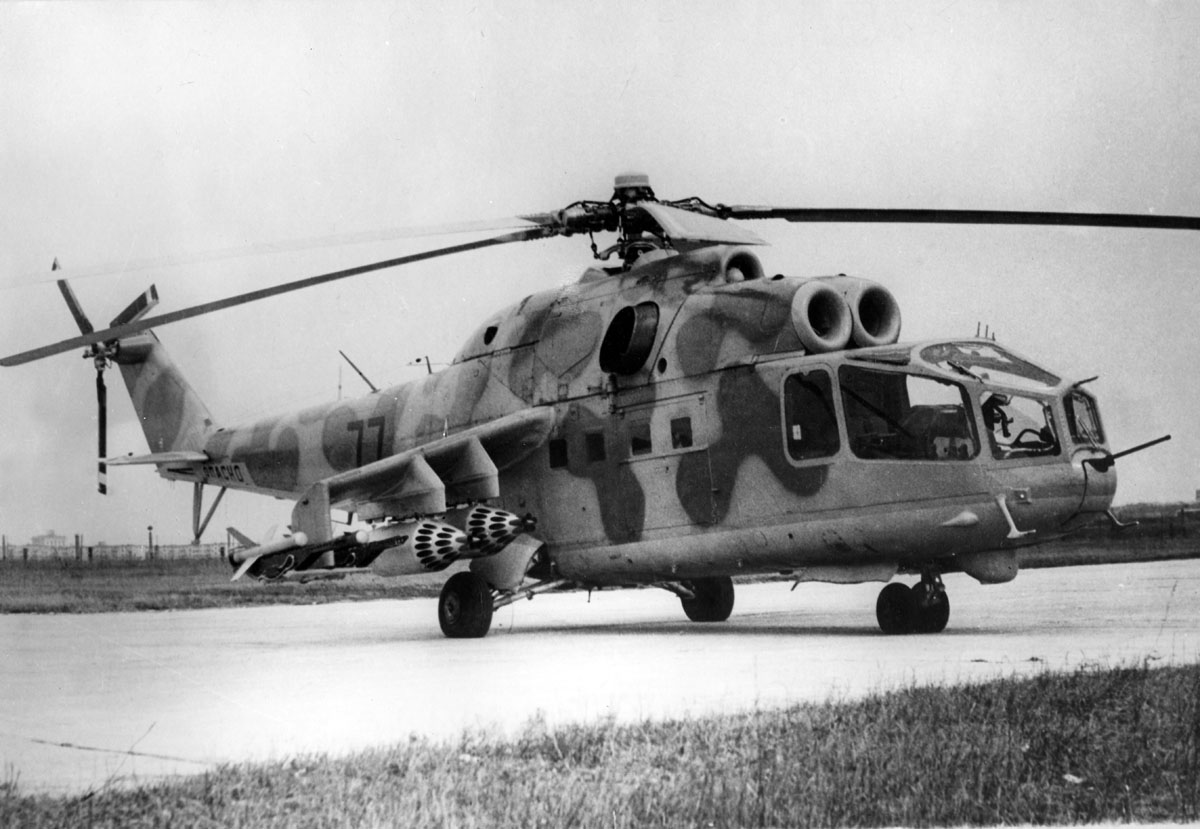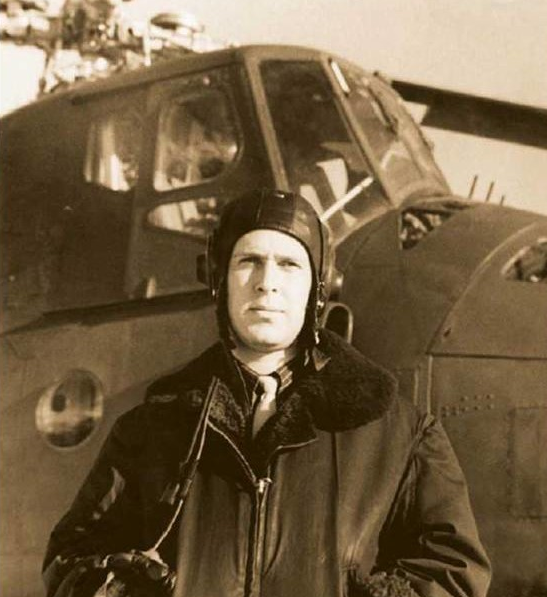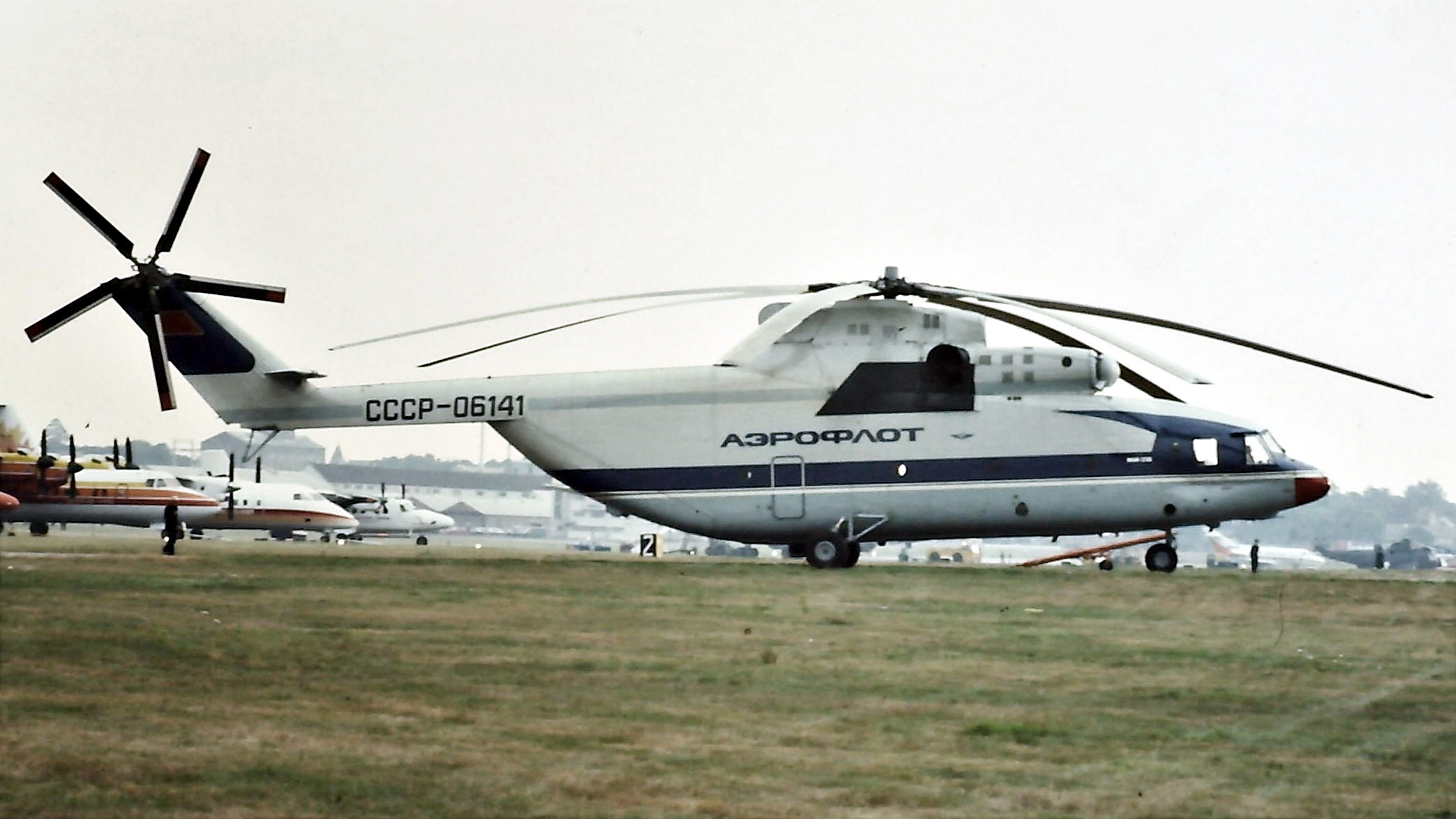
2–4 February 1982: Over a three-day period, several flight crews set a series of Fédération Aéronautique Internationale (FAI) payload-to-altitude world records at Podmoskovnoe. They flew an OKB Mil Design Bureau Mi-26 heavy lift helicopter.
On 3 February 1982, flown by Ге́рман Вита́льевич Алфёров (Herman Vitalievich Alferov) and L.A. Indeev, the Mi-26 with an all-up weight of 56,768.8 kilograms (125,153.8 pounds) flew to a height of 2,000 meters (6,562 feet).¹ Later, they flew to a height of 4,100 meters (13,451 feet) with a payload of 25,000 kilograms (55,115.6 pounds).²
The Mil Mi-26 (NATO code name: Halo) first flew on 25 October 1977. It is a twin-engine heavy-lift helicopter, normally operated by a flight crew of five, and can carry up to 90 passengers.
The Mi-26 is 40.025 meters (131 feet, 3¾ inches) long, with all rotors turning, and has a height of 8.145 meters (26 feet, 8¾ inches). The eight-bladed main rotor has a diameter of 32.00 meters (105 feet) and turns clockwise, as seen from above. (The advancing blade is on the left.) A five-bladed tail rotor is mounted on a pylon, to the right side of the aircraft, in a tractor configuration. It turns clockwise, as seen from the helicopter’s left.
The helicopter has an empty weight of 28,200 kilograms (62,170 pounds), gross weight of 49,600 kilograms (109,350 pounds) and maximum weight of 56,000 kilograms (123,450 pounds). The fuel capacity is 12,000 liters (3,200 gallons).
The Mi-26 is powered by two Lotarev D-136 turboshaft engines which are rated at 8,500 kW (11,299 shaft horsepower), each. It’s cruise speed is 255 kilometers per hour (158 miles per hour) and the maximum speed is 296 kilometers per hour (183 miles per hour). Range is 620 kilometers (385 miles). The service ceiling is 4,500 meters (14,765 feet).
320 Mil Mi-26 helicopters have been built.
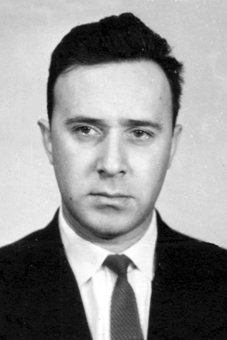
Herman Vitalievich Alferov (Ге́рман Вита́льевич Алфёров) was born at Moscow, U.S.S.R., 11 April 1934. He learned to fly at the Moscow Flying Club at the age of 16. He was a flight instructor at the Russian National Aeroclub Chkalov, the oldest flying club in Russia, from 1952 to 1954. He graduated from the DOSAAF flight/technical school at Saransk in 1954.
Alferov was a test pilot at OKB Mil Design Bureau from 1954 until 1982. He made the first flights of many Mil helicopters, including the Mi-1 KX light helicopter in 1957, the first Soviet production turboshaft-powered helicopter, the heavy-lift Mi-6 (he was co-pilot), the twin-turboshaft Mi-2, Mi-10K flying crane, and the Mi-24 “Hind” attack helicopter (co-pilot). He was the lead test pilot for the Mi-24 at the Arsenyev aviation plant at Aresenev, Primorski Krai, in the Russian Far East from 1970, and for the Mi-26 beginning in 1978.
Herman Vitalievich Alferov died at Moscow, Russia, 9 January 2012, at the age of 77 years. During his aviation career, he had been awarded the Order of the October Revolution, Order of the Red Banner of Labor (two awards), Order of the Red Star (two awards), Order of the Badge of Honor, and was named an Honored Test Pilot of the Soviet Union. He had participated in setting five FAI world records for helicopters.
¹ FAI Record File Number 9936
² FAI Record File Number 9909
© 2018, Bryan R. Swopes
